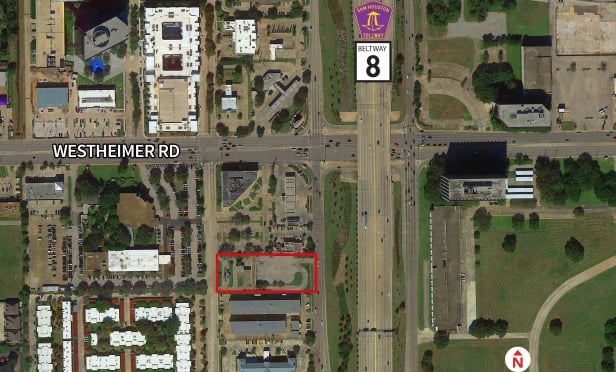 The self-storage facility will be located near the intersection of Beltway 8 and Westheimer Road.
The self-storage facility will be located near the intersection of Beltway 8 and Westheimer Road.
HOUSTON—A five-story 132,350-square-foot self-storage facility will be at the center of Houston's population growth upon completion. Total population within a 3-mile radius of the project at 10411 Westheimer Rd. grew 17% from 2000 to 2018 and now stands at nearly 200,000 people. It is expected to grow an additional 5.7% in the next five years. Near the intersection of Beltway 8 and Westheimer Road, the storage property will benefit from access and visibility, with more than 131,000 vehicles daily passing on Beltway 8 alone.
The site is located within the prominent Westchase submarket, an established business district surrounded by affluent residential neighborhoods including Briar Forest, Memorial Villages and Briar Meadow. The average annual household income within a 3-mile radius of the project is approximately $91,300.
A floating rate construction loan was recently secured on behalf of Central Southwest Texas Development LLC/CSW Development to develop the 1,311-unit class-A facility. Senior vice president Griffin Guthneck and vice president CW Sheehan led the JLL team for the financing.
“Given the exceptional density and above average household income, the site's primary market area is expected to maintain solid self-storage market fundamentals, driving the need for additional product,” Guthneck tells GlobeSt.com. “The submarket also experienced very little pressure from new supply during the current development cycle, creating a good leasing environment for this project once delivered.”
Rapid population growth heightened demand for self-storage units, influencing developers to complete more than 3.6 million square feet of space in 2018. Roughly 70% of this year's supply is in the western section of the metro. After reaching a recent low of 6.6% last year, the metro's vacancy rate rises to 9% in 2018 amid a wave of new self-storage facilities, according to a report by Marcus & Millichap.
“Self storage has proven itself to be a defensive asset class that remains stable through economic cycles,” said Guthneck. “There is still quite a bit of demand for quality self-storage product and capital is available to well-located institutional-quality projects.”
© Touchpoint Markets, All Rights Reserved. Request academic re-use from www.copyright.com. All other uses, submit a request to [email protected]. For more inforrmation visit Asset & Logo Licensing.







